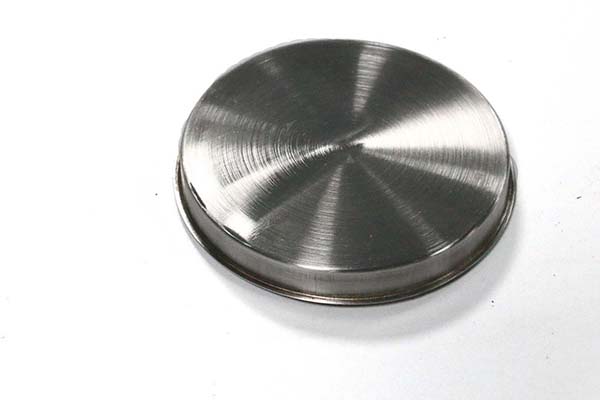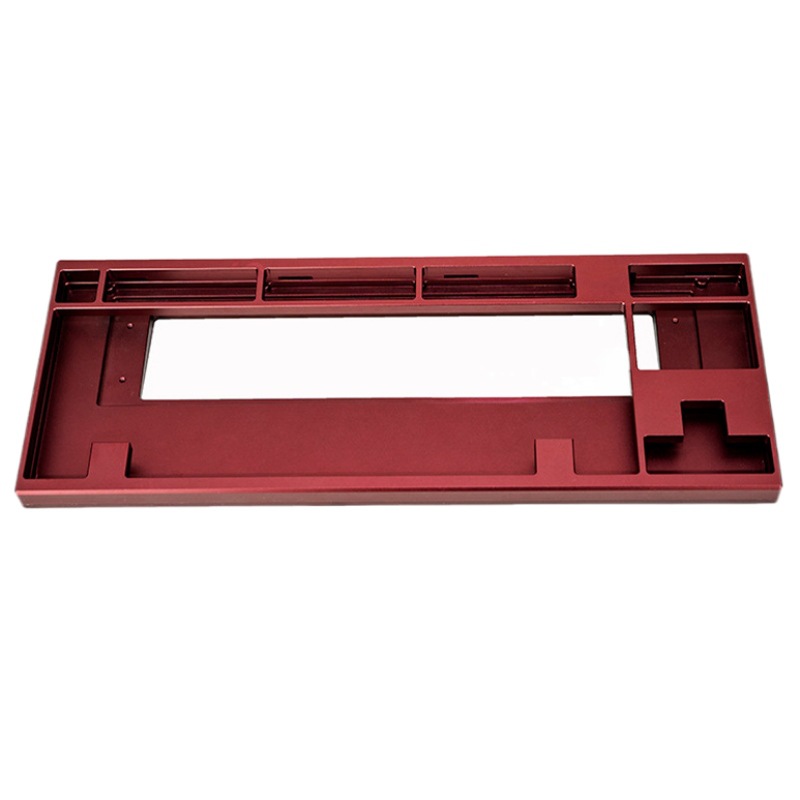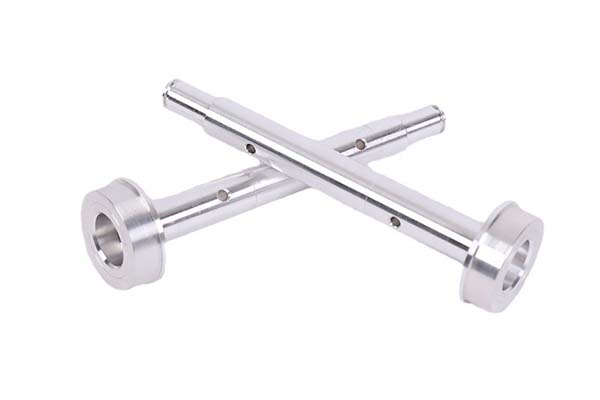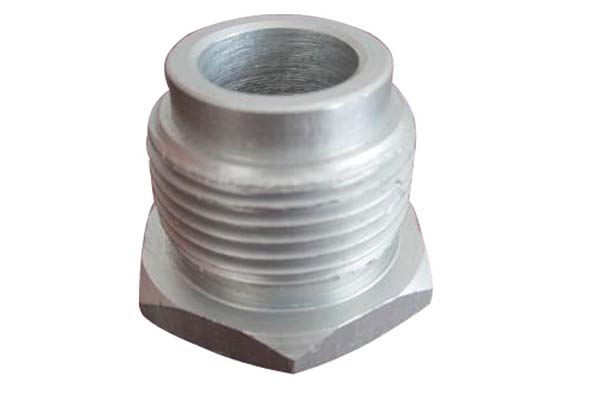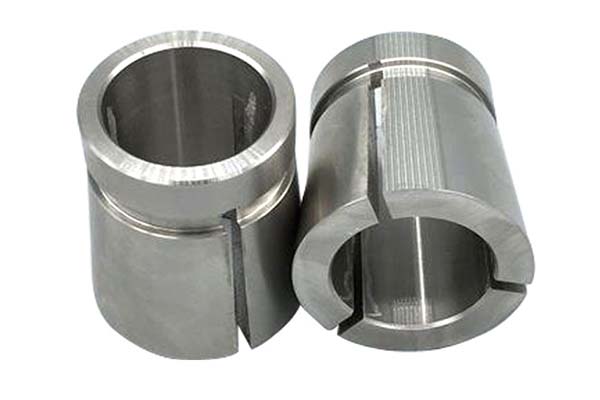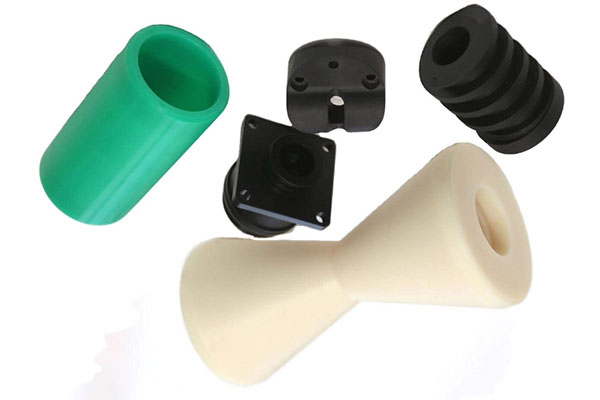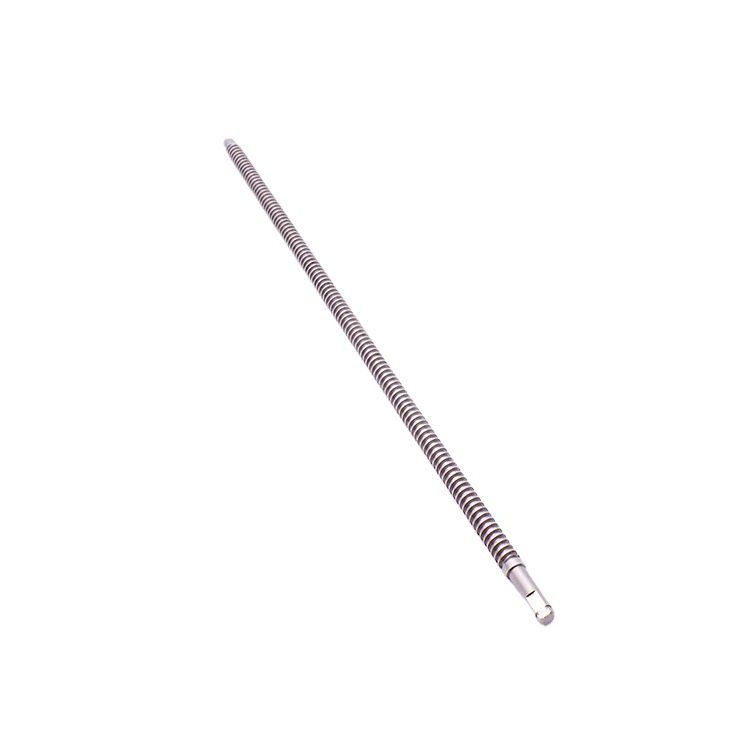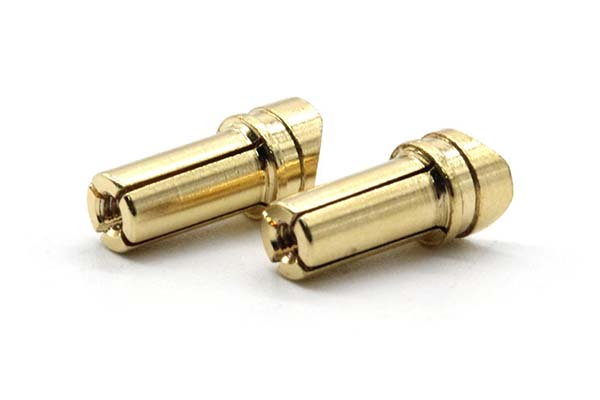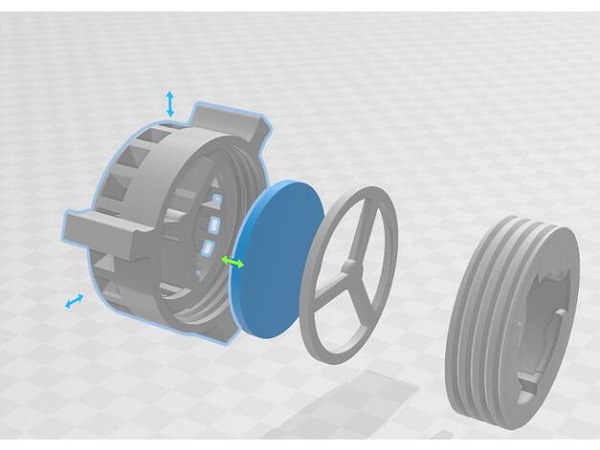Manufacturers requiring stainless steel for high-temperature applications often turn to SS309 stainless steel. As an austenitic stainless steel, it excels in heat resistance and corrosion performance, but machining it presents unique challenges. Its high chromium and nickel content enhances high-temperature strength but increases cutting forces, leading to rapid tool wear. Additionally, its tendency to work harden and generate significant heat during machining demands precise parameter control. Distinguishing its capabilities from other austenitic grades—like SS304 or SS316—requires clear material knowledge to avoid over-engineering or performance gaps. This guide addresses these pain points, offering proven strategies to optimize CNC machining SS309 for efficiency, quality, and reliability in high-heat environments.
Material Overview of SS309
SS309 stainless steel is an austenitic alloy designed for high-temperature and corrosive environments, with properties that set it apart from other stainless steels:
- Mechanical properties: Tensile strength of 550 MPa, yield strength of 215 MPa, and hardness of 20-25 HRC in the annealed state—providing superior strength at elevated temperatures (up to 900°C).
- Corrosion resistance: Excellent in oxidizing environments, with 22-24% chromium forming a stable oxide layer. Resists sulfidation and scaling better than SS304, making it ideal for high-heat applications.
- High-temperature performance: Maintains strength and oxidation resistance at temperatures up to 900°C, with short-term exposure to 1095°C possible—far exceeding the capabilities of SS304.
- Workability: Moderate machinability, with higher cutting forces than SS304 due to increased alloy content. Prone to work hardening, requiring sharp tools and controlled cutting parameters.
- Chemical composition: 22-24% chromium, 12-15% nickel, trace amounts of silicon and manganese, and no molybdenum—differentiating it from molybdenum-containing grades like SS316.
- Non-magnetic properties: Remains non-magnetic in the annealed state, though cold working can induce slight magnetism.
- Weldability: Excellent, with good resistance to hot cracking—critical for high-temperature welded components.
These properties make SS309 stainless steel indispensable in applications where heat and corrosion resistance are equally critical.
CNC Machining Processes for SS309
Core Machining Operations
CNC machining SS309 requires careful process selection to manage its high strength and work hardening tendencies:
- CNC milling: Effective for complex, high-temperature components like furnace parts. Climb milling is preferred to reduce work hardening by minimizing tool contact with already machined surfaces.
- CNC turning: Suitable for cylindrical parts such as heat exchanger tubes, with slower feed rates recommended to prevent excessive heat buildup.
- CNC drilling and CNC boring: Require sharp tools and high coolant pressure to manage chip evacuation—critical for avoiding work hardening in deep holes, which are common in industrial furnace components.
- Machining centers and multi-axis machining: Enhance efficiency for complex geometries, ensuring dimensional consistency across features like flanges or mounting brackets.
- Laser cutting: Useful for thin sheets (≤5 mm) used in high-temperature ducting, though CNC machining remains superior for tight-tolerance features.
Optimal Cutting Parameters
| Operation | Cutting Speed (m/min) | Feed Rate (mm/rev) | Depth of Cut (mm) |
| CNC milling (carbide) | 80-180 | 0.08-0.2 | 1-3 |
| CNC turning (carbide) | 120-250 | 0.12-0.25 | 1.5-4 |
| CNC drilling (carbide) | 70-130 | 0.08-0.15 | 1-2.5 |
These parameters balance material removal rates with heat control. SS309’s higher alloy content requires 10-15% slower cutting speeds than SS304 to reduce tool wear and work hardening.
Tool Selection and Tooling for SS309
Choosing the Right Tools
Tool selection for CNC machining SS309 focuses on withstanding high cutting forces and heat:
- Cutting tools: Carbide tools are essential; fine-grain carbide (WC-Co with 8-10% Co) offers the best combination of toughness and wear resistance. High-speed steel tools are only viable for low-volume, low-speed applications.
- Tool coatings: AlTiN coatings perform best, extending tool life by 40-60% compared to uncoated carbide due to their high-temperature stability (up to 800°C). TiAlN coatings are a cost-effective alternative for moderate speeds.
- Tool geometry: Positive rake angles (5-8°) reduce cutting forces, while sharp edges for cutting minimize work hardening. Thick carbide inserts with reinforced edges resist chipping under high loads.
- Tool holders: Rigid, hydraulic or shrink-fit holders minimize tool deflection, critical for maintaining tolerances in heavy cuts—common in machining thick-walled high-temperature components.
- Coolant delivery systems: High-pressure coolant (70-120 bar) delivered through the tool improves chip evacuation and reduces heat buildup, preventing tool overheating and work hardening.
Chip Control Strategies
Poor chip control exacerbates work hardening in SS309. Effective strategies include:
- Using tools with aggressive chip breakers, especially for turning operations on thick sections.
- Adjusting feed rates to promote short, fragmented chips (avoiding stringy chips that wrap around tools and cause heat buildup).
- Implementing automated chip conveyors with high-speed removal to prevent re-cutting chips, which accelerate work hardening.
Surface Finish and Quality Control
Achieving Desired Surface Characteristics
SS309’s surface finish is critical for both high-temperature performance and corrosion resistance, as rough surfaces can accelerate scaling or oxidation:
- Surface roughness: Achievable Ra values range from 1.6 μm (finish machining) to 6.3 μm (roughing), with 3.2 μm typical for industrial high-temperature parts. Critical sealing surfaces may require Ra ≤ 0.8 μm to prevent gas leakage.
- Surface finish requirements: Furnace components often require Ra ≤ 3.2 μm to minimize heat-induced stress concentrations, while chemical processing parts may need Ra ≤ 1.6 μm to resist corrosion pitting.
- Finishing processes: Grinding ensures tight tolerance surfaces (±0.002 mm) for high-temperature seals, while polishing reduces surface roughness to enhance oxidation resistance in long-term high-heat exposure.
Quality Control Measures
- Inspection methods: Coordinate Measuring Machines (CMM) verify dimensional accuracy, while profilometers measure surface roughness (Ra, Rz). High-temperature performance testing (oxidation resistance at 900°C) is critical for critical applications.
- Quality control standards: Compliance with ASTM A240 (sheet/plate) and ISO 9001 ensures consistent material properties and machining quality.
- Surface defects to monitor: Built-up edge (BUE) can cause surface tearing, creating sites for oxidation. Passivation (a post-machining treatment) helps restore the oxide layer, mitigating these risks.
Heat Treatment and Post-Machining Processes
Heat Treatment for SS309
SS309 benefits from specific heat treatments to optimize machinability and high-temperature performance:
- Annealing: Heating to 1040-1150°C, followed by water quenching, softens the material (reducing hardness to 20-22 HRC) and improves machinability—especially useful for cold-worked stock.
- Stress relief annealing: Heating to 300-500°C for 1-2 hours reduces residual stresses from machining, preventing distortion in high-temperature service where thermal expansion can exacerbate stress.
Post-Machining Processes
- Passivation: A nitric acid treatment removes free iron from the surface, enhancing corrosion resistance by 25-40% and ensuring the oxide layer remains stable at high temperatures.
- Electropolishing: Improves surface smoothness (Ra ≤ 0.05 μm) and reduces crevices where oxidation can initiate, extending service life in cyclic high-heat environments.
- Post-machining cleaning: Ultrasonic cleaning removes coolant residues and chips, preventing contamination that could accelerate high-temperature corrosion.
Applications of SS309 Machined Parts
SS309 stainless steel’s unique combination of high-temperature resistance and corrosion performance makes it ideal for specialized applications:
- High-temperature applications: Furnace liners, heat exchanger tubes, and kiln components—where continuous exposure to 600-900°C is common.
- Chemical processing equipment: Reactors and piping handling oxidizing chemicals at elevated temperatures, resisting sulfidation better than SS304.
- Automotive parts: Exhaust manifolds and turbocharger components for high-performance engines, withstanding exhaust gas temperatures up to 850°C.
- Industrial machinery: Welding fixtures and high-temperature conveyor systems, where both heat resistance and weldability are critical.
- Power generation: Boiler components and turbine parts, resisting oxidation in steam and high-heat environments.
In furnace manufacturing, for example, SS309 outlasts SS304 by 2-3x in continuous 800°C service due to its superior oxidation resistance.
Technical Specifications and Standards
Adhering to industry standards ensures SS309 parts meet high-temperature performance requirements:
- ASTM standards: ASTM A240 (sheet/plate), ASTM A276 (bars), and ASTM A312 (pipes) define material properties, including high-temperature strength and corrosion resistance.
- ISO standards: ISO 15510 specifies chemical composition and mechanical properties for austenitic stainless steels, including SS309.
- Machining tolerances: Achievable tolerances of ±0.02 mm for small parts and ±0.1 mm for large, thick-walled components—critical for ensuring proper fit in high-temperature assemblies where thermal expansion is significant.
- Quality certifications: Compliance with ISO 9001, ASME BPVC (for pressure vessels), and NORSOK M-630 (for oil and gas high-temperature components) is common.
Challenges and Solutions in Machining SS309
Overcoming Key Machining Challenges
CNC machining SS309 presents several challenges, but targeted solutions yield reliable results:
- High cutting forces: SS309’s higher alloy content increases cutting forces by 15-20% compared to SS304. Using rigid machine tools with high torque spindles (≥30 Nm) reduces deflection and ensures dimensional accuracy.
- Work hardening: More pronounced than in SS304 due to higher chromium and nickel. Use sharp tools, moderate cutting speeds, and minimal depth of cut to reduce contact time and limit hardening.
- Tool wear: Elevated cutting forces and heat accelerate wear. AlTiN-coated carbide tools last 40-60% longer than uncoated tools, offsetting their higher cost in high-volume production.
- Heat generation: Friction-induced heat is significant, especially in heavy cuts. High-pressure coolant (100-120 bar) and intermittent cutting cycles prevent tool overheating and maintain cutting edge integrity.
- Chip evacuation: Stringy chips are common, increasing heat buildup. Using tools with wide flutes and high coolant pressure (≥100 bar) improves chip flow, reducing re-cutting and work hardening.
Cost and Efficiency Considerations
Balancing Performance and Cost
CNC machining SS309 is more expensive than machining SS304, but strategic choices optimize efficiency for its specialized applications:
- Machining cost: 30-40% higher than SS304 due to slower cutting speeds, increased tool wear, and higher material cost. This premium is justified by 2-3x longer service life in high-temperature environments.
- Tool cost: AlTiN-coated carbide tools cost 2-3x more than uncoated carbide but last 2-3x longer, reducing total tooling expenses by 15-20% in high-volume runs.
- Production rate: Typical rates of 10-20 parts per hour for small components, 60-70% of SS304’s rate but necessary for achieving high-temperature performance.
- Efficiency improvements: High-speed machining centers with rigid frames and high-torque spindles reduce cycle times by 15-25% by handling SS309’s higher cutting forces without deflection.
Comparison with Other Materials
How does SS309 compare to similar high-performance materials?
| Material | Max Service Temp (°C) | Corrosion Resistance (Oxidizing) | Machinability (Relative) | Cost (Relative) |
| SS309 | 900 | Excellent | Good (60%) | High |
| SS304 | 815 | Good | Good (75%) | Medium-High |
| SS316 | 870 | Excellent (Reducing) | Good (65%) | High |
| SS310 | 1150 | Excellent | Poor (40%) | Very High |
| Inconel 600 | 1095 | Superior | Poor (30%) | Very High |
- SS309 vs. SS304: SS309 offers 10% higher max service temperature and superior oxidation resistance but costs 15-20% more. Choose SS309 for continuous 800+°C service; SS304 suffices for lower temperatures.
- SS309 vs. SS316: SS316 excels in reducing environments (e.g., sulfuric acid) but has lower high-temperature strength. SS309 is better for oxidizing high-heat applications like furnaces.
- SS309 vs. SS310: SS310 handles higher temperatures (up to 1150°C) but is harder to machine and 30-40% more expensive. SS309 is a cost-effective alternative for 600-900°C service.
Yigu Technology’s Perspective
At Yigu Technology, we specialize in CNC machining SS309 for high-temperature industrial and automotive clients. Our data shows that using AlTiN-coated carbide tools with high-pressure coolant (100 bar) reduces tool wear by 50% compared to standard setups, lowering per-part costs. For furnace components, we recommend stress relief annealing after machining to prevent distortion during thermal cycling. Our quality control includes CMM inspection for dimensional accuracy and high-temperature oxidation testing (per ASTM G146) to verify performance, ensuring parts meet the strictest standards for long-term reliability in high-heat environments.
FAQ
- What makes SS309 suitable for high-temperature applications?
SS309’s high chromium content (22-24%) forms a stable oxide layer that resists scaling and oxidation at temperatures up to 900°C, while its nickel content (12-15%) maintains austenitic structure and strength at elevated heat.
- How does SS309’s machinability compare to SS304?
SS309 is 15-20% harder to machine than SS304 due to higher alloy content, requiring slower cutting speeds (10-15% lower) and more durable tools (e.g., AlTiN-coated carbide) to manage increased cutting forces and work hardening.
- Can SS309 be used in corrosive environments outside high temperatures?
Yes, SS309 offers good corrosion resistance in oxidizing chemicals (e.g., nitric acid) at room temperature, though SS316 is better for reducing environments (e.g., sulfuric acid) where molybdenum provides superior protection.
